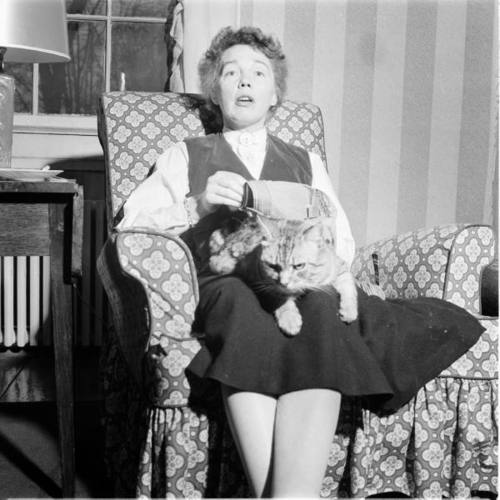In a 1988 New York Times book review of a biography about writer Jean Stafford, Joyce Carol Oates diagnosed, fairly early, the mainstreaming of pathology as entertainment in America, before real addictions and faux marriages became a selling point–something to behold. An excerpt:
“Instead of granting Stafford the singularity of her achievement – the highly regarded novels Boston Adventure, The Mountain Lion and The Catherine Wheel and some two dozen superbly crafted short stories – the biographer chooses to sound, from virtually his first page, the clarion call of failed promise; his claim is that ‘the causes of Stafford’s decline are several and elusive’ and that ‘for all the excuses she loved to make, at the deepest level she knew that she had no one to blame but herself.’ Thus pathography’s unmistakable slant, emphasis, tone.
Never considering that early praise lavished upon Jean Stafford on the occasion of her first novel, Boston Adventure, in 1944, might have been journalistic hyperbole – Life magazine excitedly heralded the 28-year-old author as the ‘most brilliant of the new fiction writers’ – Mr. Roberts judges most of Stafford’s adult life in terms of its ‘decline’ and grants to her 20-odd years of alcoholic crises as much weight as the earlier, productive years. Surely this is unfair? And surely wrong-headed? Where a judicious biography might diplomatically round off a consideration of its subject’s career when the career is more or less over, summarizing years of fitful dissolution in a brief space, the pathography shifts into high gear, becoming a repository of illnesses and disasters and disappointments, primarily because evidence – letters, documents, witnesses’ testimonies – is abundantly available.
Admirers of Jean Stafford’s writing will be dismayed at the demeaning images this biography yields: Stafford in various stages of public and private drunkenness; Stafford in Payne Whitney Clinic and other parts of New York Hospital 34 times; Stafford tripping over her cat and falling downstairs drunk; or vomiting into her purse; or glimpsed through a window by a friend, passed out cold; Stafford hallucinating in Grand Central Station; Stafford as a ‘fag hag’ in East Hampton; Stafford as a ‘battered, bruised, drunken old woman’ of whom, in the mid-1970’s, one of her oldest friends declares: ‘I was very happy to turn my back on her.’ Yet more offensively, the biographer claims to detect a thread of syphilitic infection through most of Stafford’s life, speculating upon circumstantial evidence that she contracted the disease in 1936, while studying in Heidelberg, and that the disease radically affected her entire life. Suicidal moments are duly noted; cruel, unsparing testimony by numerous witnesses is provided. The menu of ailments and paranoid fantasies escalates, ending finally, mercifully, in death by cardiac arrest at the age of 63, after a severe stroke had left Stafford aphasic. Is there no defense, no way of eluding such protracted exposure? As Oscar Wilde once observed, the prospect of biography ‘adds to death a new terror.'”

